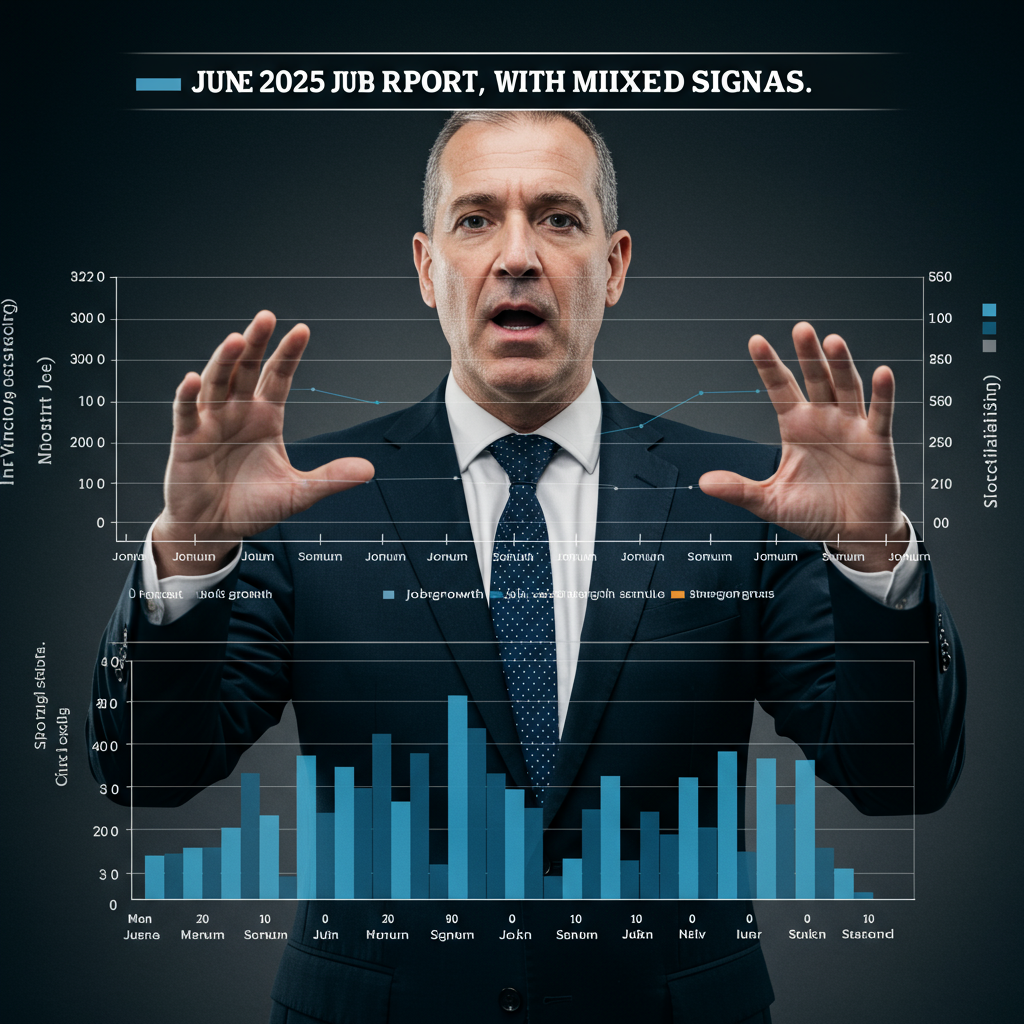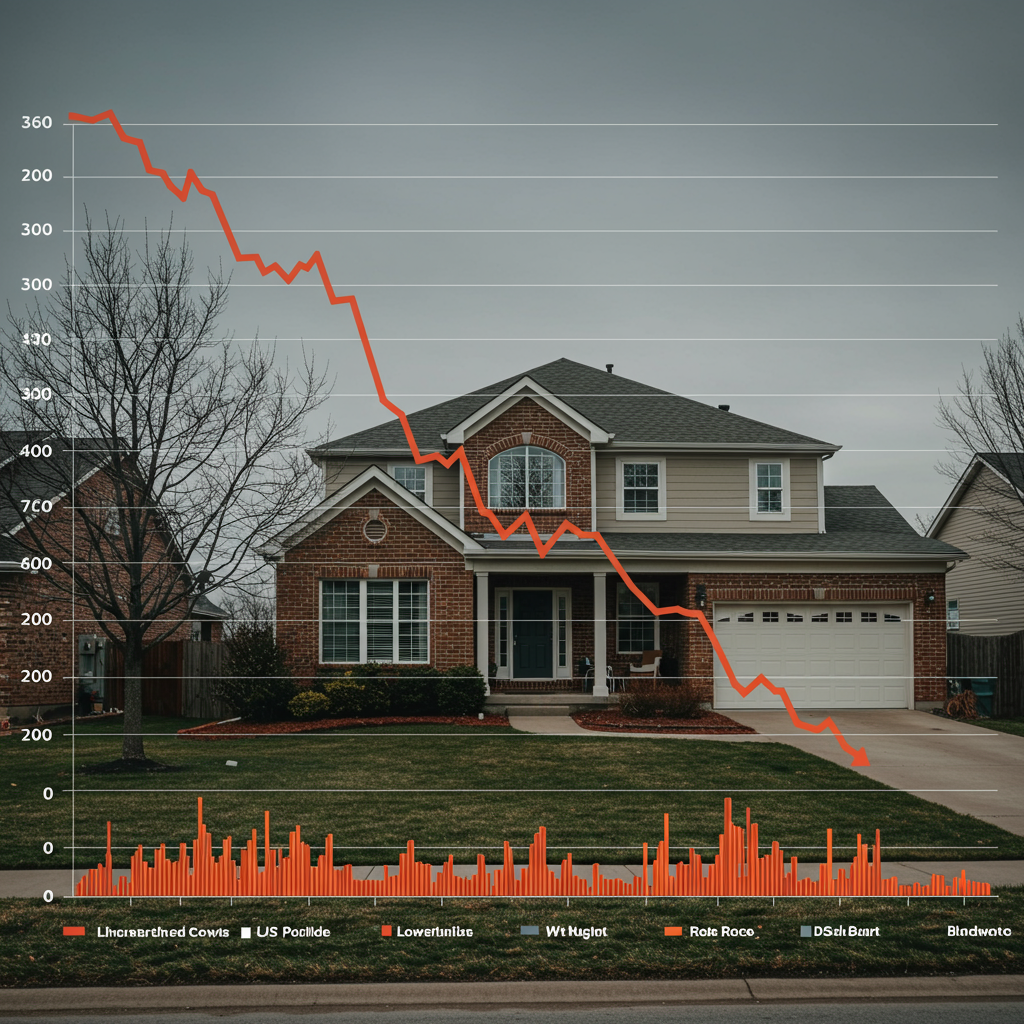The latest data from the US labor market for June 2025 presents a complex picture. While headline figures like job growth and the unemployment rate showed surprising strength, a deeper dive into the numbers reveals underlying concerns and potential weaknesses. This report arrived amid a cautious economic environment, heavily influenced by evolving Federal Reserve monetary policy and the impact of ongoing trade disputes. Understanding the nuances of this report is crucial for grasping the current state and potential future trajectory of the American economy.
Headline Numbers Outpace Expectations
The initial figures from the June jobs report offered a positive surprise. The U.S. economy added a stronger-than-forecast 147,000 jobs. This figure significantly exceeded economists’ predictions, which had centered around a gain of just 118,000 positions.
Accompanying the solid job growth was an unexpected dip in the unemployment rate. It fell to 4.1% in June. This was down from 4.2% recorded in May. Forecasters had anticipated a slight rise to 4.3%. Furthermore, previous months saw upward revisions. An additional 16,000 jobs were added to the payroll counts for April and May. These revisions contributed to the seemingly robust headline performance.
Wage Growth Remains Modest
Average hourly wages saw a modest increase in June. Paychecks rose by 0.2% for the month. On a year-over-year basis, wages were up 3.7%. While this rate is approaching the 3.5% level sometimes viewed as consistent with the Federal Reserve’s 2% inflation target, it came in cooler than many forecasters had anticipated. This moderate wage growth suggests inflationary pressures from labor costs remain contained for now.
Peering Beneath the Surface: Signs of Weakness
Despite the positive headline figures, a closer examination of the June report reveals less encouraging trends. Significant concerns emerged from specific sectors and labor force dynamics. The overall strength appears heavily influenced by government hiring. This masked considerable weakness in the private sector.
Private businesses added only 74,000 workers in June. This was a sharp decline from the 137,000 hired in May. It marked the weakest pace of private-sector job creation since October 2024. This slowdown in business hiring indicates potential caution among employers.
Public Sector Drives Gains
Much of the job growth came from the public sector. State governments added 47,000 workers. Local governments contributed another 33,000. Notably, nearly 64,000 of these government jobs were in education. This large education gain could be subject to seasonal fluctuations common at the end of the school year. Stripping out the potentially volatile government sector, the core private hiring performance looks much weaker.
The Shrinking Labor Force: A Troubling Trend
One of the most significant concerns in the report was the continued shrinking of the labor force. The number of people working or actively seeking work fell by 130,000 in June. This followed a substantial drop of 625,000 just one month earlier in May. This consecutive decline is a key metric suggesting potential underlying issues in the job market’s health.
Economists point to specific factors that could be driving this trend. There is speculation that increasing immigration deportations and associated fears are impacting foreign workers. These individuals may be leaving the labor force. A smaller labor force can artificially suppress the unemployment rate. This happens because fewer people are counted as actively looking for jobs and therefore unemployed.
Difficulty Finding Work and Rising Discouraged Workers
The report suggests it is becoming harder for certain groups to find employment. This includes young people entering the workforce. It also impacts those attempting to re-enter after a break. This difficulty can lead to longer job search times. It may also result in extended periods of unemployment for some individuals.
A particularly stark statistic from the report is the significant increase in discouraged workers. These are individuals who have given up looking for jobs because they believe none are available. The number of discouraged workers rose sharply by 256,000 in June. This brought the total to 637,000. This surge indicates growing frustration among those on the sidelines of the labor market.
Implications for Federal Reserve Policy
The upside surprise in the headline job growth is expected to influence the Federal Reserve’s monetary policy stance. The report’s strength reinforces the central bank’s current “wait-and-see” approach. The Fed is likely to maintain its benchmark interest rate at its upcoming meetings. This follows a period where the Fed had cut rates three times in 2024. These cuts came after 11 hikes between 2022 and 2023 aimed at combating inflation.
The central bank remains cautious. They are particularly focused on how broader economic factors could impact inflation and the job market. This includes scrutinizing the effects of current trade policies. Following the jobs data release, market reactions reflected the reduced likelihood of an imminent rate cut. Yields on U.S. Treasurys rose. Futures market data showed a decreased probability of a Fed rate cut at their next meeting.
Impact of Trade Policy and Future Outlook
The outlook for the labor market appears clouded by external policy factors. Businesses are currently grappling with uncertainty stemming from the current administration’s economic policies. This includes the aggressive and often unpredictable use of tariffs. Learn more about how trade policy can affect the economy.
The mainstream economic consensus views tariffs negatively. Economists argue they increase costs for businesses and consumers. They can also reduce economic efficiency by limiting competition. Furthermore, tariffs often provoke retaliatory measures from other countries. The uncertainty surrounding these policies makes businesses hesitant. They may delay making long-term decisions regarding hiring and investment.
Consequently, some economists are bracing for a significant slowdown in job growth. Sarah House, a senior economist at Wells Fargo, forecasts growth potentially falling below 100,000 jobs per month in the latter half of 2025. This projected slowdown is largely attributed to the ongoing policy uncertainty. The June jobs report, despite its headline strength, does little to alleviate these concerns about the medium-term trajectory.
Frequently Asked Questions
What were the main surprising numbers in the June US Jobs Report?
The report delivered a surprising gain of 147,000 jobs in June, significantly beating forecasts of 118,000. The unemployment rate also unexpectedly fell to 4.1% from 4.2% in May, lower than the anticipated 4.3%. Additionally, job figures for April and May were revised upwards by 16,000. These headline numbers painted a stronger initial picture than many expected.
Why are economists concerned about the labor market despite the low unemployment rate?
Concerns arise from several factors beneath the surface. Private sector hiring was notably weak, adding only 74,000 jobs – the fewest since October 2024. Much of the growth came from the public sector, including potentially seasonal education jobs. The labor force also shrank for a second consecutive month, potentially linked to immigration trends, which can artificially lower the unemployment rate by reducing the pool of job seekers. The number of discouraged workers also saw a significant jump.
How might the June jobs report influence future economic policy or job prospects?
The strong headline figures are expected to reinforce the Federal Reserve’s current posture, making an immediate interest rate cut less likely. The report also highlights ongoing uncertainty from trade policy and tariffs, which economists believe could lead to slower job growth later in 2025 as businesses hesitate to hire and invest. This environment may make the job search more challenging for new or re-entering workers, potentially leading to longer periods of unemployment or frustration for discouraged job seekers.
Conclusion
The June US Jobs Report for 2025 presents a classic case of mixed signals. While the headline numbers for job creation and the unemployment rate were unexpectedly strong, providing some positive momentum, a deeper analysis reveals caution is warranted. Weak private sector hiring, a shrinking labor force, and a rise in discouraged workers point to underlying fragilities. Coupled with the uncertainty introduced by trade policy, the report suggests the path ahead for the U.S. labor market may be less robust than the initial numbers imply. Navigating this complex environment requires careful attention to both the headline figures and the nuanced details they often conceal. Stay informed on the latest US economic indicators.
Word Count Check: 990 words



